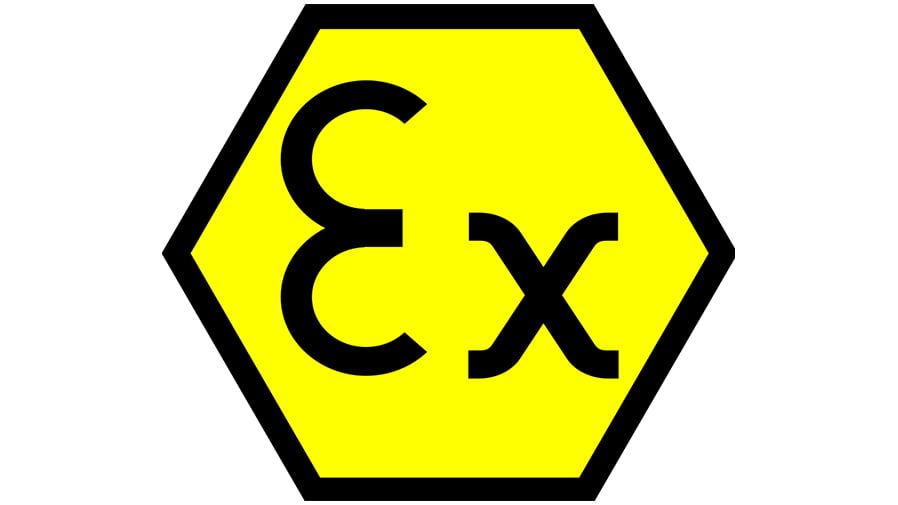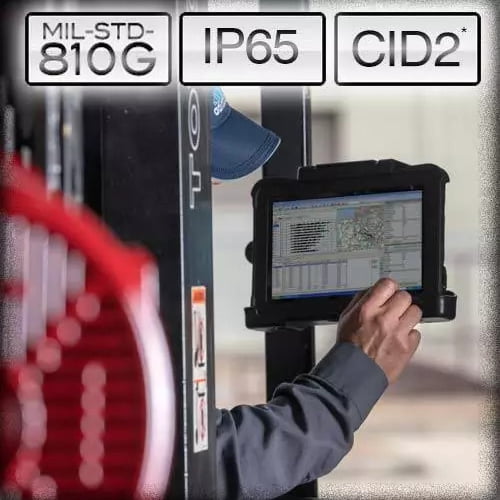You know that you need intrinsically safe equipment in a hazardous environment, but how can you be sure that the equipment you choose will be best for the environment you’re working in?
By avoiding the five most common mistakes made by personnel when choosing ATEX-certified equipment for hazardous environments.
To avoid mistakes:
- Conduct a proper hazard assessment
- Comply with ATEX regulations
- Consider environmental factors
- Maintain your equipment and seek support
- Train and familiarize your frontline workers
Selecting the right ATEX-certified equipment is of paramount importance to ensure the safety of personnel and protect critical infrastructure.
ATEX certification ensures that equipment is designed and tested to be intrinsically safe in potentially explosive atmospheres. This comprehensive certification encompasses various industries operating in hazardous environments, including the oil and gas, chemical, mining, and manufacturing sectors.
All the equipment sold by Intrinsically Safe Store is ATEX-certified and we offer free support and advice to help you avoid the following mistakes.
Mistake 1: Neglecting Proper Hazard Assessment
In the quest for workplace safety in hazardous environments, one of the critical mistakes to avoid is neglecting proper hazard assessment.
A thorough hazard assessment is the foundation upon which effective safety measures are built.
The following steps describe how to conduct a thorough hazard assessment:
Step 1: Understand ATEX Classification and Hazardous Areas
It is important to familiarize yourself with the ATEX classification system and identify the hazardous areas in your facility. ATEX classifies hazardous areas into zones based on the likelihood and duration of the presence of explosive conditions.
There are two types of hazards to consider when conducting your hazard assessment:
- Gas/vapor hazards: Identify areas where flammable gasses or vapors may be present, such as chemical storage areas or petroleum processing plants. They are classified as Zone 0, Zone 1, or Zone 2; with Zone 0 representing the highest risk and Zone 1 and Zone 2 representing the lowest risk.
- Dust hazards: Identify areas where combustible dust may be present, such as grain handling facilities or woodworking shops. They are classified as Zone 20, Zone 21, or Zone 22; with Zone 20 representing the highest risk and Zone 22 and Zone 21 representing the lowest risk.
Learn More: The importance of understanding hazardous area classifications
Step 2: Assess Equipment Requirements and Ignition Sources
Determine the specific requirements for equipment used in the hazardous areas. The requirements will include factors such as temperature, pressure, gas groups, and ignition sources.
- Temperature and Pressure: Depending on the specific hazardous area, the equipment must be designed to operate within certain temperature and pressure ranges.
For example, equipment used in Zone 0 areas with high-risk gasses may require explosion-proof enclosures capable of withstanding high temperatures and pressures.
Most of the equipment at Intrinsically Safe Store is Zone 1 and 2 as they are the most common in industrial use. - Gas Groups: Different gasses or vapors are categorized into specific gas groups based on their properties. The equipment must be suitable for the gas group present in the hazardous area.
For instance, Group I equipment is designed for use in mining environments, while Group II equipment is intended for industrial areas. Intrinsically Safe Store offers equipment for both groups. - Ignition Sources: Identify potential sources of ignition in the hazardous area, such as electrical equipment, hot surfaces, sparks, static electricity, or mechanical impact. Ensure that the selected equipment is designed to minimize or eliminate these ignition risks.
Expert Tip: Remember that equipment suitable for one gas group may not be suitable for another. Always match your equipment to the specific gas group of your hazardous area.
Step 3: Evaluate Equipment Protection Levels and Compatibility
Consider the protection levels required for the equipment and its compatibility with the surrounding environment and existing infrastructure.
- Protection Levels: Equipment is assigned a protection level, indicated by a specific code, to demonstrate its suitability for different hazardous zones.
For example, “Ex d” indicates equipment with flameproof enclosures suitable for Zone 1 areas with gas/vapor hazards, while “Ex tb” refers to equipment suitable for Zone 21 areas with dust hazards. - Compatibility: Ensure that the selected equipment is compatible with the existing infrastructure, such as electrical systems, installation requirements, and maintenance procedures.
For instance, the electrical rating of the equipment should match the available power supply and be suitable for the hazardous area’s requirements.
Step 4: Review Certifications and Consult With Experts
Verify that the selected equipment has valid ATEX certifications and markings.
ATEX-certified products undergo rigorous testing to ensure compliance with the relevant standards.
Just look for the ATEX certification mark on the equipment, indicating compliance with relevant directives and standards. Then, review the certification documents to ensure that they are up to date.
The ATEX certification mark provides information about the equipment’s compliance with the ATEX directive and its suitability for use in potentially explosive atmospheres. It contains specific details that characterize the ATEX certification on equipment.
Here are the key elements typically included in the ATEX certification mark:
- Ex Symbol: The ATEX certification mark starts with the “Ex” symbol, which signifies that the equipment is designed and certified for explosive atmospheres.
- Equipment Group: The next element of the mark indicates the equipment group for which it is certified. This can be denoted by a Roman numeral, such as “I” for mining equipment or “II” for industrial equipment.
- Category: The ATEX directive categorizes equipment into different categories based on the level of protection required. The certification mark includes the category number, such as “2” for surface industries or “3” for equipment intended for underground mining.
- Equipment Protection Level: This is a series of alphanumeric codes following the category number that represents the equipment’s protection level.
These codes specify the type of protection provided by the equipment against potential ignition sources and their suitability for specific hazardous zones. Examples of protection levels include “Ex d” for flameproof enclosures or “Ex e” for increased safety. - Certification Body Number: The certification mark also includes the identification number of the notified body that conducted the conformity assessment and issued the certification. This number signifies that the equipment has been tested and verified by an authorized body.
- Additional Markings: Depending on the specific equipment and its intended use, the ATEX certification mark may also include additional markings indicating other relevant certifications or standards met by the equipment.
These may include international standards, country-specific requirements, or other safety standards applicable to the equipment.
It is important to note that the exact format and arrangement of the ATEX certification mark may vary slightly depending on the specific certification body and the equipment manufacturer.
The key details mentioned above are typically included in the mark to provide clear information about the equipment’s compliance with ATEX regulations and its suitability for hazardous environments.
If you lack expertise in conducting hazard assessments or selecting ATEX-certified equipment, seek guidance from experts and safety professionals at Intrinsically Safety Store.
Just contact us between 9 am and 5 pm, Monday through Friday, and we can provide valuable insights and help ensure compliance and safety.
By conducting a thorough hazard assessment, you can make informed decisions when choosing equipment that meets the unique requirements of your environment.
Neglecting this crucial step can lead to serious safety gaps and potential accidents.
Intrinsically Safe Store recognizes the paramount importance of a proper hazard assessment and offers a range of safety products that align with the specific needs of hazardous environments.
By prioritizing a comprehensive hazard assessment, you can ensure optimal safety and select the most suitable ATEX-certified equipment from Intrinsically Safe Store’s extensive collection of cameras, fans, lighting, mobile devices, and more.
Mistake 2: Overlooking Compliance With ATEX Regulations
In hazardous environments, ensuring workplace safety is paramount, and compliance with ATEX regulations plays a pivotal role in achieving this goal.
However, one common mistake that safety professionals and procurement specialists make is overlooking compliance with ATEX regulations when selecting equipment.
ATEX regulations are specifically designed to minimize the risks associated with explosive atmospheres; and non-compliant equipment can pose severe threats to personnel and infrastructure.
Comply with ATEX regulations and ensure:
- Safety of Personnel: Adhering to ATEX compliance ensures that the selected equipment meets specific safety standards designed to minimize the risk of explosions or fires in hazardous areas.
By prioritizing the safety of personnel, you create a secure working environment, reduce the potential for accidents, injuries, or fatalities, and safeguard the well-being of employees and contractors.
ATEX-certified equipment undergoes rigorous testing to ensure safety features and suitability for use in potentially explosive atmospheres, providing peace of mind for you and your workers that you are employing reliable and safe equipment. - Legal Compliance: ATEX compliance is mandatory in certain regions and countries.
Failure to comply with ATEX regulations can lead to legal consequences, including fines, penalties, or suspension of operations.
Ensuring compliance helps maintain good standing with regulatory authorities and establishes a foundation for responsible operations within the boundaries of the law. - Risk Mitigation: ATEX-certified equipment actively mitigates the risks associated with potentially explosive atmospheres. These equipment types are designed and tested to prevent or minimize the likelihood and impact of ignition sources.
By selecting ATEX-certified equipment, you have access to built-in safety features, robust construction, and advanced engineering, which significantly contribute to risk reduction. This helps protect personnel, assets, and the surrounding environment from potential harm or damage, ensuring a safer work environment. - Reliability and Performance: ATEX-certified equipment undergoes rigorous testing and evaluation to ensure its suitability for use in hazardous environments. By choosing our ATEX-certified products, you can have confidence in their reliability, durability, and performance.
These equipment types are specifically designed to withstand the challenges of potentially explosive atmospheres, including exposure to flammable gasses, vapors, or combustible dust. Their adherence to ATEX regulations and standards ensures that they can operate effectively and safely in demanding conditions.
Investing in reliable, high-performance ATEX-certified equipment minimizes equipment failures, reduces downtime, improves productivity, and helps avoid costly incidents or disruptions.
By understanding the importance of ATEX compliance and adhering to the regulations, you can significantly enhance workplace safety and mitigate potential hazards.
Intrinsically Safe Store recognizes the importance of ATEX compliance and offers a range of meticulously tested and certified safety products, including cameras, fans, lighting, and mobile devices.
By prioritizing ATEX compliance in your equipment selection process, you can be proactive about workplace safety and create an environment that fosters risk reduction and employee well-being.
The table below provides an overview of key ATEX regulations and their implications for selecting equipment.
| ATEX Regulation | Description | Relevance In Equipment Selection |
| ATEX Directive | EU directive governing equipment and protective systems for explosive atmospheres | Ensures compliance with safety standards |
| Zone Classification | Divides hazardous areas into specific zones based on the likelihood of explosive atmospheres | Guides equipment selection suitable for specific zones |
| Equipment Marking | Provides information on the suitability of equipment for specific zones and gas/dust groups | Helps identify compliant equipment for specific hazardous environments |
Mistake 3: Failing to Consider Environmental Factors
In hazardous environments, overlooking environmental factors when selecting ATEX-certified equipment can have detrimental consequences.
Failing to consider variables such as temperature, humidity, and corrosion resistance can compromise workplace safety and equipment performance in the following ways:
- Increased Risk of Equipment Failure: Hazardous environments often present harsh conditions, such as high temperatures, moisture, and corrosive substances. If equipment is not appropriately designed to withstand such conditions, it might result in premature failure.
This can lead to unexpected downtime, costly repairs or replacement of equipment, leading to operational inefficiencies and potential safety hazards if critical safety systems are compromised. - Safety Risks to Personnel: Neglecting temperature, humidity, and corrosion resistance can compromise the safety of personnel working in hazardous environments.
For example, inadequate temperature resistance in electrical components can lead to overheating and potential ignition sources. Insufficient corrosion resistance, meanwhile, can result in equipment degradation, compromising its ability to operate safely.
High humidity levels can affect the performance of electronic components and increase the risk of short circuits or electrical failures. These safety risks can result in accidents, injuries, or even fatalities. - Increased Maintenance and Replacement Costs: Equipment that is not designed or equipped to withstand the specific temperature, humidity, and corrosion conditions of a hazardous environment may require more frequent maintenance or replacement.
This can result in increased costs in repairs, spare parts, or equipment replacement, affecting the overall operational budget.
It is essential to choose equipment that can withstand the specific environmental challenges of the hazardous area.
Why This Matters: Overlooking environmental factors such as temperature, humidity, and corrosion resistance when selecting ATEX-certified equipment can compromise safety and equipment performance, leading to potential equipment failure, safety risks to personnel, and increased maintenance costs.
Intrinsically Safe Store recognizes the significance of environmental considerations and offers a range of safety products engineered to endure harsh conditions.
Whether it’s cameras, fans, lighting, or mobile devices, our products are designed to operate reliably and effectively in diverse environments.
By selecting equipment that meets the demanding requirements of hazardous locations, safety professionals and procurement specialists can bolster workplace safety, minimize equipment failure risks, and ensure optimal performance in even the harshest conditions.
Mistake 4: Disregarding Equipment Maintenance and Support
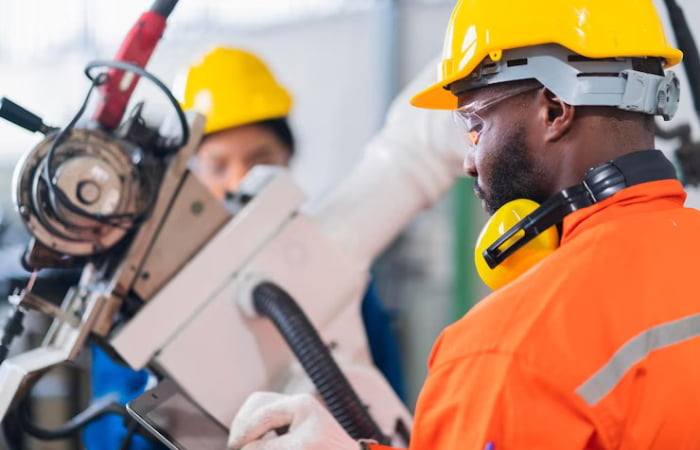
In the pursuit of workplace safety in hazardous environments, one common mistake that safety professionals and procurement specialists make is disregarding the importance of equipment maintenance and support.
While selecting reliable ATEX-certified equipment is crucial, the journey doesn’t end there. Adequate maintenance and support are paramount to ensuring the long-term safety and optimal performance of the equipment.
By neglecting this aspect, significant risks and safety gaps can emerge, undermining the very purpose for which the equipment was brought in.
When you properly regard equipment maintenance and support you’re ensuring:
- Equipment Integrity: Regular maintenance and support of ATEX-certified equipment help ensure its continued integrity and reliability in hazardous environments.
This includes inspections, calibration, testing, and preventive maintenance to identify and address any potential issues or deterioration.
By keeping the equipment in optimal condition, workplace safety is enhanced, and the risk of equipment failures, malfunctions, or safety hazards is minimized.
For instance, regular maintenance of explosion-proof lighting fixtures in an oil refinery involves inspecting seals, cleaning lenses, and checking electrical connections to ensure that the equipment remains protected against potential explosions and maintains proper illumination levels. - Compliance with Safety Standards: ATEX-certified equipment maintenance and support are essential for maintaining compliance with safety standards and regulations.
Regular inspections and servicing help ensure that the equipment continues to meet the required safety standards, preventing any deviations or non-compliance.
Compliance with safety standards is crucial to mitigate risks, demonstrate adherence to regulations, and provide a safe working environment for personnel.
For example, periodic inspection and recertification of an ATEX-certified flameproof enclosure used for housing electrical control panels in a chemical plant ensures that it maintains the required level of explosion protection and remains compliant with relevant ATEX regulations. - Early Detection of Equipment Issues: Timely maintenance and support provide an opportunity for early detection of equipment issues or potential failures.
Through regular monitoring, testing, and diagnostic procedures, any anomalies or signs of deterioration can be identified and addressed promptly.
Early detection helps prevent equipment breakdowns, malfunctions, or safety hazards, allowing for proactive measures to maintain workplace safety.
For example, routine thermal imaging inspections of electrical equipment, such as motors or control panels, in a hazardous manufacturing facility can allow you to detect abnormal heat patterns, indicating potential issues like loose connections or component failure.
Addressing these problems early can prevent equipment failures that could lead to electrical fires or other safety risks. - Access to Expert Technical Support: Maintenance and support of ATEX-certified equipment often involve access to expert technical support from manufacturers or specialized service providers. These experts possess in-depth knowledge of the equipment and its specific requirements.
They provide guidance on maintenance procedures, troubleshooting, and safety recommendations, ensuring that the equipment is handled correctly and any concerns are addressed effectively.
For example, when encountering operational issues with an ATEX-certified gas detector system in a confined space, seeking technical support from the manufacturer can help diagnose the problem, determine possible corrective actions, and ensure that the system continues to function accurately, providing early warning of potential gas hazards.
Intrinsically Safe Store recognizes the significance of maintenance and support in maintaining workplace safety.
As a customer-centric provider of top-quality safety products, we are committed to delivering excellent service and comprehensive support to our clients.
We believe that by prioritizing equipment maintenance and providing prompt assistance when needed, we contribute to greater safety in hazardous environments.
Our team of experts is dedicated to guiding customers through maintenance procedures, offering troubleshooting assistance, and addressing any concerns promptly.
With Intrinsically Safe Store, you can trust that not only will you receive the lowest price possible, but you will also benefit from the peace of mind that comes with knowing your safety products are backed by exceptional service and support.
⭐⭐⭐⭐⭐
“This is an awesome electric blower. Powered by the fire truck circuit when performing PPV at the entrance of the building. It’s a powerful fan.” — Archeal, Verified Buyer
Mistake 5: Overlooking Training and User Familiarization
In the pursuit of workplace safety in hazardous environments, one common mistake that is made is overlooking the importance of training and user familiarization when selecting ATEX-certified equipment.
While procuring reliable and compliant equipment is essential, it is equally crucial to ensure that your frontline workers are adequately trained and familiar with the proper use and handling of the equipment.
By neglecting training and user familiarization programs, organizations put themselves at risk of safety hazards and potential accidents.
Proper training provides users with the knowledge and skills needed to effectively operate each ATEX-certified piece of equipment, understand its limitations, and follow safety protocols.
It equips them with the necessary expertise to identify potential risks, react appropriately to emergencies, and mitigate hazardous situations.
User familiarization helps build confidence and competence in handling the specific safety products employed in their workplace.
At Intrinsically Safe Store, we recognize the significance of training and user familiarization in maximizing safety outcomes.
We provide comprehensive training resources and user guidance to ensure that safety professionals and users are well-prepared to handle our range of safety products, which includes cameras, fans, lighting, and mobile devices.
By prioritizing training and user familiarization, organizations can significantly enhance safety levels and minimize the risks associated with hazardous environments.
Remember, safety is a collective effort, and investing in the proper training of personnel is an investment in the well-being of everyone involved.
The table below shows some of our ATEX-certified equipment. Visit the collection page for more product options.
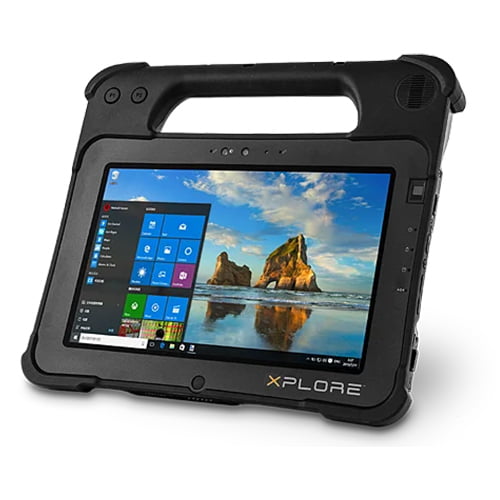
|

|
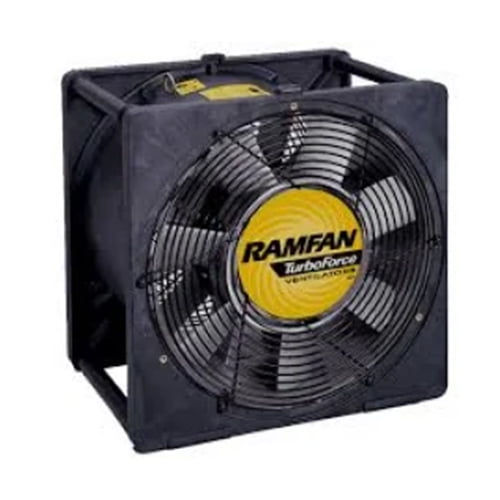
|
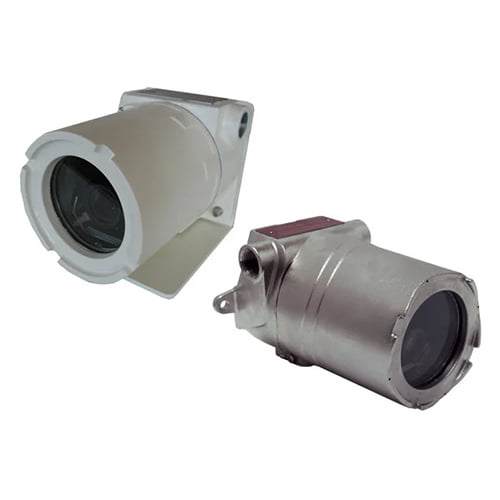
|
⭐⭐⭐⭐⭐
“The best in its class, the Explosion Proof CCTV Camera IVC AMZ-3041-2 X-Series is certified Class I Division 1, Class 2, IECEx with ATEX 94/9/EC rating. The high resolution day/night camera is very helpful when it’s getting dark. The camera itself is very durable as it is made of a heavy-duty, cast-aluminum enclosure. This is highly useful in a hazardous environment.” — Mikel, Verified Buyer
Prioritize Safety and Compliance: Make Informed Choices for ATEX-Certified Equipment
In the pursuit of workplace safety and compliance, choosing the right ATEX-certified equipment for hazardous environments is of utmost importance.
By avoiding common mistakes and making informed decisions, safety professionals and procurement specialists can significantly enhance safety and mitigate risks.
Intrinsically Safe Store stands as your reliable partner in providing top-notch safety products.
With a wide range of ATEX-certified equipment, including cameras, fans, lighting, and mobile devices, Intrinsically Safe Store offers safety improvements tailored to many types of hazardous environments.
⭐⭐⭐⭐⭐
“It’s so bright and intrinsically safe, it’s perfect for dangerous environments.” — Archeal, Verified Buyer
Our commitment to excellent service, coupled with competitive prices, ensures that you can prioritize safety without compromising your budget.
Remember, thorough hazard assessments, compliance with ATEX regulations, consideration of environmental factors, proper equipment maintenance, and user training are essential steps in selecting reliable ATEX-certified equipment.
By prioritizing safety and compliance, you create a secure work environment, protecting both personnel and critical assets.
Trust Intrinsically Safe Store to provide the safety products you need for peace of mind in hazardous environments.


























